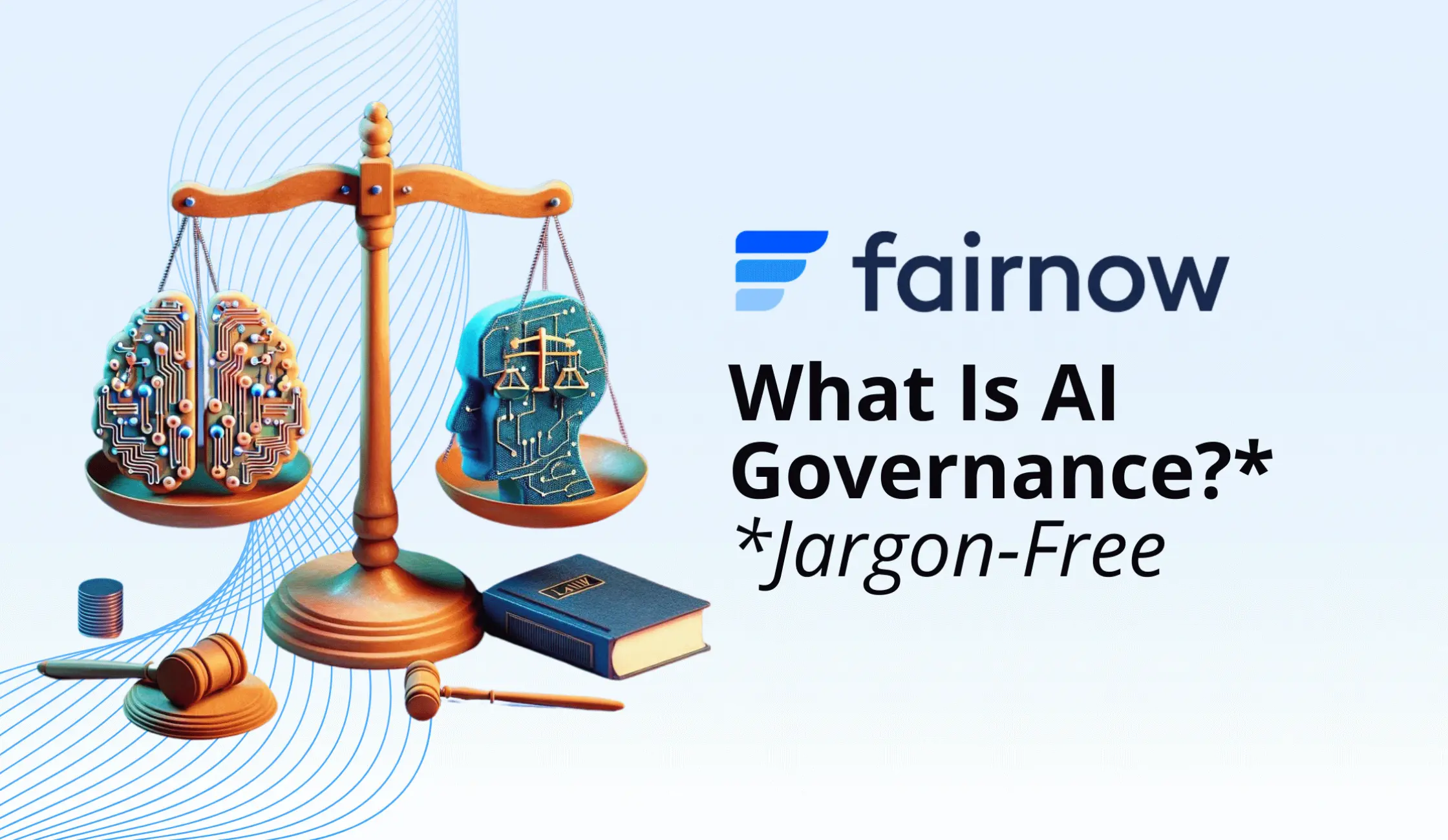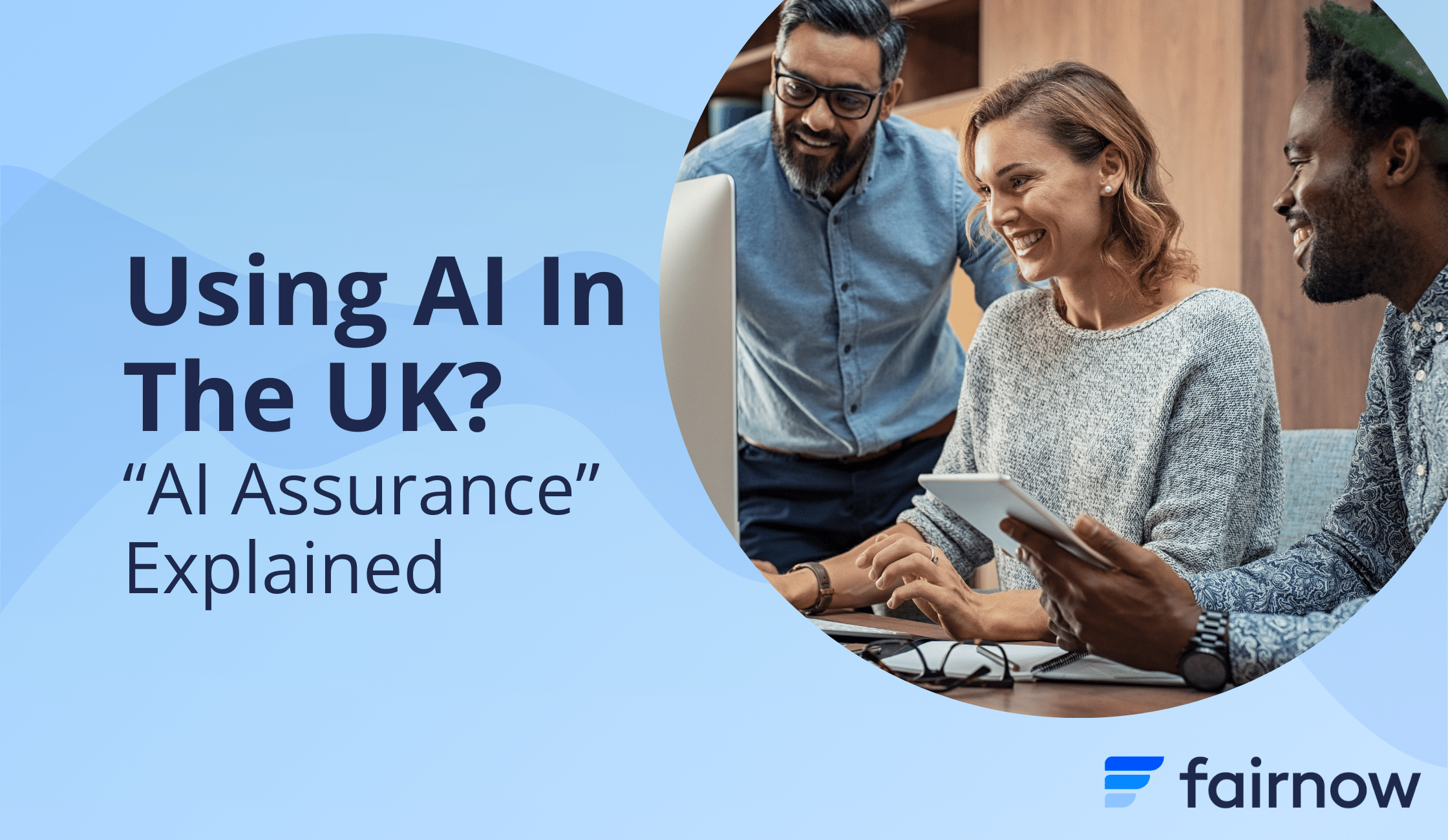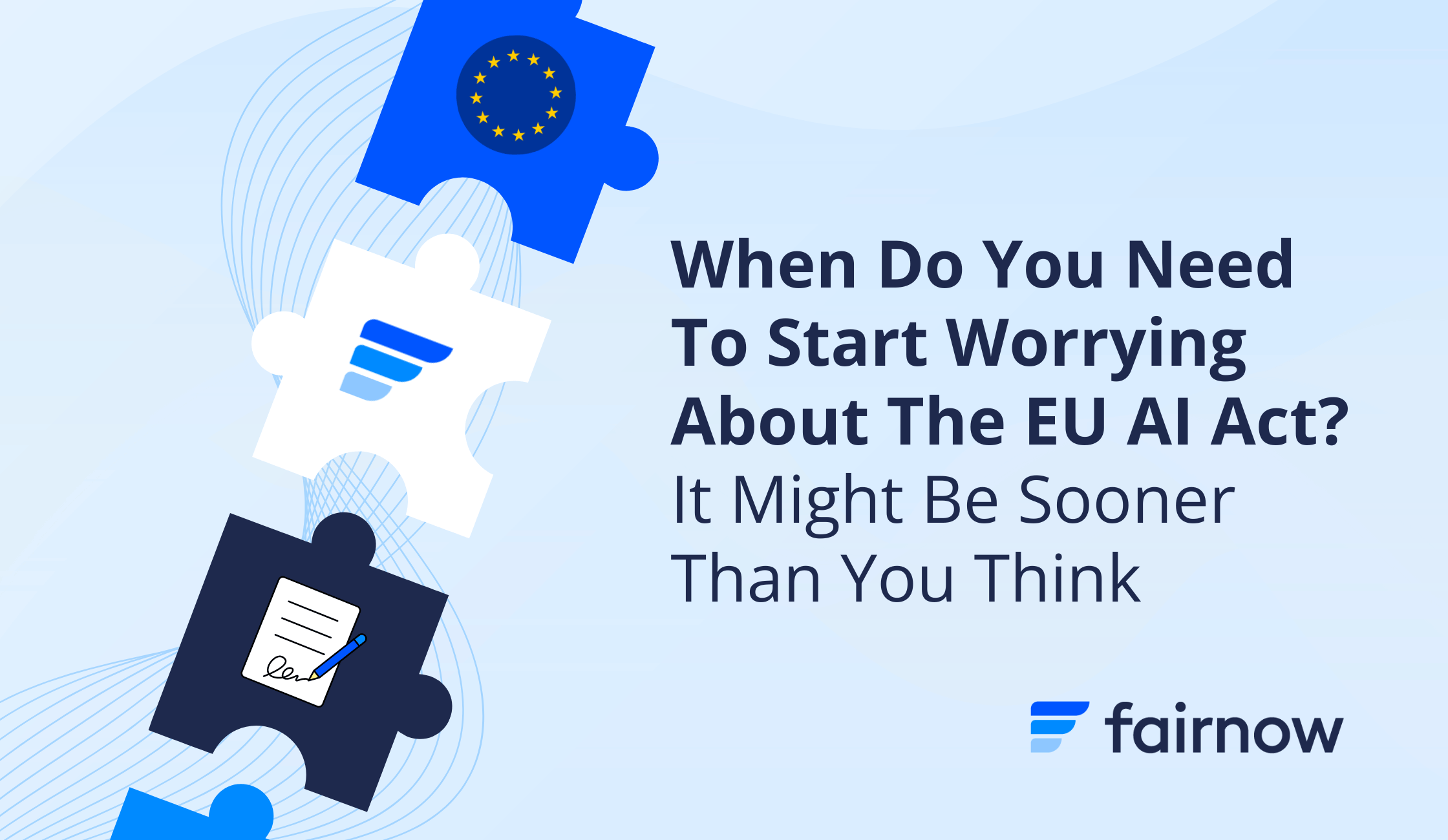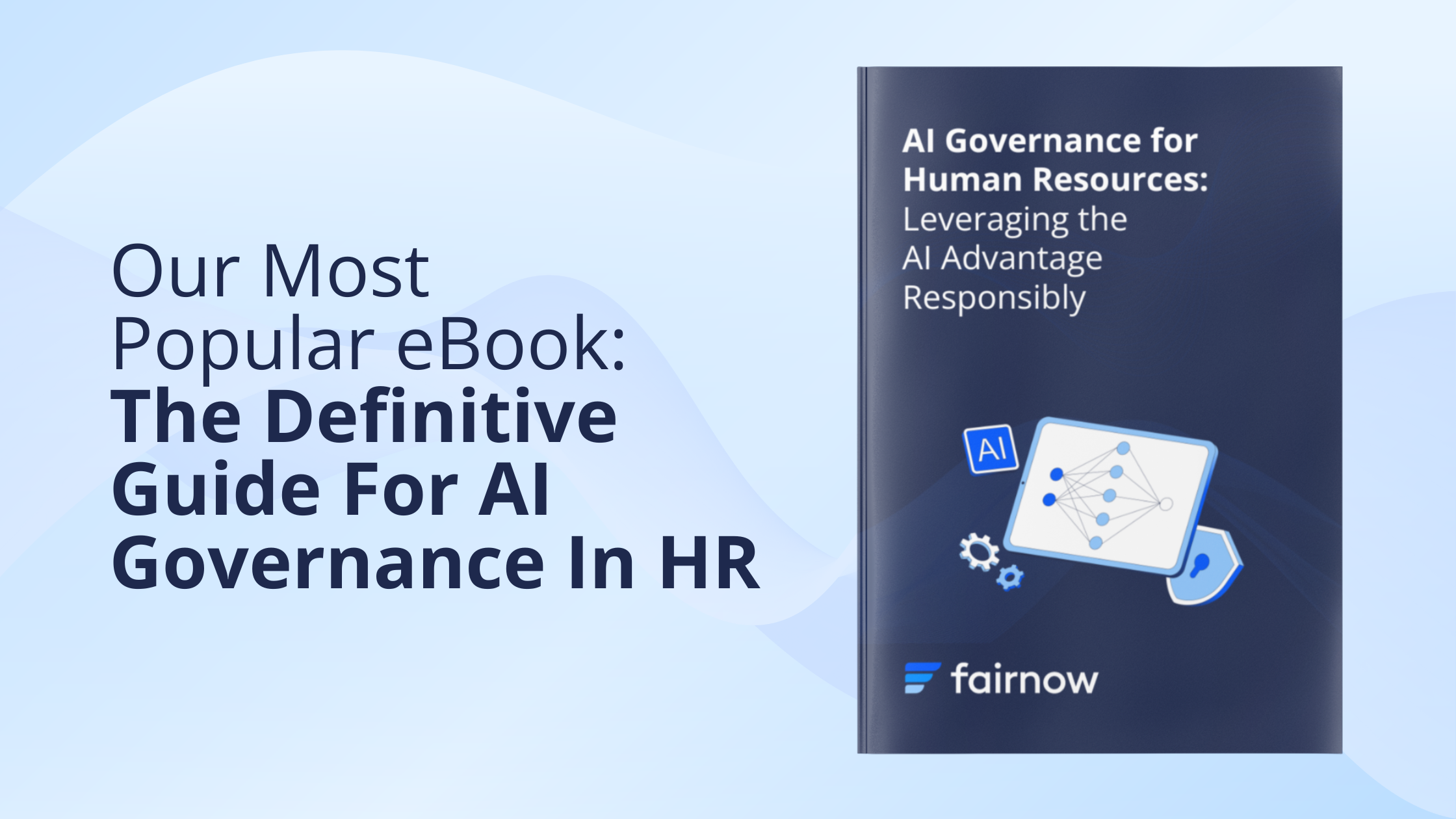What Is AI Governance? (Explained in Plain Language)
Top 5 Key Insights Everyone Needs to Know:
- AI governance affects everyone. As AI technologies become more integrated into our daily lives, from smart assistants to job application screenings, the decisions they make can affect us all. This means it’s crucial to have rules and guidelines in place to ensure these tools are used fairly and safely.
- AI governance exists to ensure “fairness”—just like us at FairNow! Although technical definitions vary, AI governance frameworks ensure that AI technologies are developed and used ethically and fairly. This includes preventing biases in AI systems that can lead to unfair treatment of individuals based on race, gender, or other characteristics and ensuring that AI respects privacy and human rights.
- AI governance creates transparency and accountability. It is critical that we understand how the AI that we use makes its decisions and who’s responsible if something goes wrong.
- AI governance tools are evolving right alongside AI. As organizations continue to build and buy more and more AI tools, AI governance software is evolving to meet their compliance needs.
- AI governance isn’t as complicated as it may seem. If you strip away the technical jargon, governance can be simple and empowering. FairNow’s goal is to make AI governance easy to understand and even easier to implement.
Q: What Is the Simple Definition of AI Governance?
A: AI governance is the set of rules, policies, and practices that guide how artificial intelligence systems are developed, used, and managed to ensure they are safe, ethical, and fair.
Q: How Would You Explain AI Governance to a Five-Year-Old?
A: AI governance is like having rules for how our smart robot friends should behave. It makes sure they are good, play fair, and help everyone without causing any problems.
Q: Why Do We Need AI Governance?
A: To prevent the robots from taking over! Kidding – kind of. As we increasingly depend on AI for critical decisions in areas like employment, lending, healthcare, and education, it’s crucial that we carefully watch and evaluate these systems. We need to ensure they’re fair and don’t lead to unintended negative effects.
Q: What Regulations Are In Place To Enforce AI Governance?
A: There are many initiatives and regulations being enforced globally that require and promote proper AI governance.
A few of the big ones you will likely see popping up over and over include:
Major AI Regulations:
- EU AI Act. This is a regulation proposed by the European Union to establish a legal framework for AI systems.
- The Act will apply two years after it enters into force, with some exceptions for specific provisions. The legislation takes a “risk-based” approach, classifying and regulating systems based on their risk levels.
- Significant details of the act are expected to be released in mid 2024.
- US AI legislation: In the US, AI entered the political conversation in 2023, culminating in President Biden’s Executive Order on AI. In 2024, many items detailed in Biden’s executive order will be enacted. Some key themes of the EO include:
- NIST will define new standards for generative AI security and safety
- Guardrails for data privacy in AI technology
- Addressing algorithmic discrimination
- Protecting workers, consumers, patients, and students from harm
- Ensuring responsible use of AI by government agencies
US State & City-Level Regulations*:
Within the United States, many state and city-level regulations are evolving. A great example of this is:
- NYC Local Law 144 is called the “Automated Employment Decision Tools (AEDT) law.”
- It applies to employers and employment agencies using AEDTs to evaluate candidates who reside in New York City.
- This law aims to eliminate bias in the use of AEDTs, which typically use algorithms, artificial intelligence, or machine learning to help HR professionals sort through, prioritize, or decide steps in the employment process, from hiring to firing.
- The law prohibits employers and employment agencies from using an automated employment decision tool unless the tool has been subject to a bias audit within one year.
- The Department of Consumer and Worker Protection (DCWP) began enforcement of this law and rule on July 5, 2023.
*Note NYC LL144 is only one of many state and city-level regulations. Others include but are not limited to: Maryland Code Section 3-717, Illinois Artificial Intelligence Video Interview Act (AIVIA) California AB 331, DC “Stop Discrimination by Algorithms” Act, MA Bill 1873
Global AI Standards:
- US NIST AI Risk Management Framework (AI RMF), unlike the above regulations, AI RMF is a standard.
- The standard is a set of guidelines developed by the National Institute of Standards and Technology (NIST) to help organizations assess and manage the risks associated with implementing and using AI systems.
- It is intended for voluntary use and aims to improve the ability to incorporate trustworthiness considerations into designing, developing, using, and evaluating AI products, services, and systems.
- The framework was released on January 26, 2023.
- ISO 42001 is a “process standard.”
- The standard is currently voluntary and opt-in. Organizations that wish to demonstrate sound AI management practices can do so by following the standard and getting certified.
- Governments like the EU may look to make ISO 42001 compliance a requirement in some instances, like procurement of AI by governments. If this happens, ISO 42001 compliance could become table stakes for selling AI, much like SOC2 and ISO 27001 are for information security.
- It was published on January 15, 2023.
With over 100 additional requirements expected to be added in 2024, companies will need to meticulously monitor regulatory developments to comply with existing rules across jurisdictions and prepare for new ones in the making.
Many organizations are expected to adopt AI governance software to track their requirements automatically.
Q: What Do Organizational Leaders and Stakeholders Care About When It Comes To AI Governance?
A: It Depends on Who You Ask!
New rules and laws are coming out fast, and they’re a big challenge for company leaders who need to keep up to avoid legal, ethical, reputational, and financial risks. Here’s how this affects different parts of a company:
HR (Human Resources):
- Fair Hiring: HR has to make sure that when they use AI for hiring or managing people, it’s not biased or unfair, and follows the law.
- Teaching Employees: They need to help employees understand how AI is used at work, especially about privacy and how secure their jobs are.
- Looking After Data: HR must handle personal information of employees carefully and legally, especially when AI uses this data.
Legal:
- Following the Rules: The legal team has to make sure everything the company does with AI is legal, which can be tricky as laws keep changing.
- Avoiding Legal Trouble: They look for any legal issues AI might cause, like being unfair to people, and try to fix these issues before they become a problem.
- Crafting Policies: They write rules for the company on how to use AI the right way.
Technology/IT:
- Setting Up AI Systems: This team implements AI systems and ensures they work properly, are fair, and are safe.
- Keeping Data Safe: They have to protect all the data AI uses so that it doesn’t get stolen or misused.
Leadership Team (C-Suite):
- Making Big Decisions: The big bosses have to think carefully about how to use AI in the company, making sure it’s innovative, follows the rules, and is used safely.
- Workflow And Approval Management: With so many stakeholders involved, simply getting everyone in the same room proves challenging. Many organizations are searching for platforms to help centralize and simplify the compliance process.
- Global Regulatory Compliance: Emerging technology is helping organizations stay lawful and up-to-date with current and pending regulations.
Q: What AI Governance Solutions Are Available?
A: We’re so glad you asked! AI governance software is more important than ever.
Good AI governance software finds the right mix between being efficient and keeping human control in the loop. This lets professionals use AI’s advantages wisely.
Do organizations need to have AI governance software? Nope.
Just like organizations may not need to have payroll software or tax software… it is technically possible to keep track of all your payroll and taxes manually.
However, very quickly, those manual processes can get out of control, and it starts to make financial, legal, and ethical sense to use tools to support your team.
That’s where we come in.
Forward-thinking organizations recognize that robust AI governance is essential to scale AI-enabled tools without scaling risk.
Q: What Features Should An AI Governance Solution Have? (+ Examples)
A: A robust AI governance software solution should offer these seven features. We’ve attempted to rank them from “critical” to “nice-to-have,” but in our opinion they are all very valuable!
1: AI Inventory:
A comprehensive AI inventory that effectively catalogs, manages, and assesses all AI assets within an organization, ensuring accountability, compliance, and risk management throughout the AI lifecycle.
Like a library full of all the AI tools and projects your company is working on. It helps you keep track of everything AI-related, making sure you know who’s working on what.
2: Regulatory Compliance Toolkit:
Ensures continuous adherence to all relevant regulations, laws and ethical guidelines governing AI use, especially as they shift and evolve. Alerts the appropriate individuals when models fall out of compliance.
Like a referee, the regulatory compliance toolkit ensures every AI model plays by the rules, applying the most up-to-date rulebook depending on where the AI operates.
3: Bias Detection & Mitigation:
Equipped with sophisticated algorithms to identify and neutralize biases in AI models, promoting fairness. Organizations should prioritize systems that seamlessly integrate with their existing systems or offer integration-free solutions such as a synthetic fairness simulation.
Like a highly skilled detective that can spot unfairness in how your AI tools make decisions. If it finds something off, it knows exactly how to make it right, and alerts the authorities.
4: Intelligent Risk Assessment:
A function that employs predictive analytics and AI to proactively identify potential risks and vulnerabilities within AI operations, enhancing preemptive governance actions.
Like having a crystal ball that can predict what might go wrong with your AI projects before it actually happens. Using smart predictions, it helps you avoid pitfalls and helps prioritize your AI governance efforts.
5: LLM Evaluations:
A complex feature set that enables ongoing scrutiny of AI performance, ensuring models remain accurate and drift-free over time.
Think of this as a health check-up for your AI, specifically for those that work with large language models (LLMs). It makes sure your AI continues to understand and generate language accurately, without drifting into making mistakes or nonsense over time.
6: Detailed Audit Trails and Reporting:
Generates exhaustive logs and reports of AI actions for accountability, compliance, and performance analysis.
This feature is like a meticulous historian for your AI activities. It keeps a detailed record of what each AI tool has done, making it easy to review its actions, prove compliance, and understand its performance.
7: Collaboration and Workflow Management:
Facilitates seamless teamwork and governance processes through intuitive tools and interfaces.
Like a conductor of an orchestra, this feature coordinates all of your musicians (team members). It ensures everyone knows their part and plays it at the right time, resulting in a beautiful symphony.
8: Vendor Risk Assessment:
Provides a thorough evaluation of third-party vendors’ compliance, security, and performance risks, ensuring external partners align with organizational AI governance standards.
This feature acts as a background checker for any external company you might use for AI-related work. It makes sure they’re trustworthy and their products or services won’t pose a risk to your projects or reputation.
Using Fairnow to Become Compliant the Easy Way: 6 Steps
- Step 1 (Start Here!): Assess Current Compliance Status
-
- Audit Existing Processes: Review your current processes and identify areas where AI is used or could be implemented.
- Determine if these processes meet the existing legal standards and regulations regarding fairness and non-discrimination.
- Not using any AI? Then you may be able to skip this process for now. However, you will also need to confirm that none of your third-party vendors are using AI. If any of your vendors are using AI, you’ll want to do a thorough analysis of their AI use as well.
- Identify Gaps: Pinpoint any discrepancies between your current practices and the requirements set by relevant employment laws, such as the Equal Employment Opportunity (EEO) laws, and AI-specific regulations.
-
- Step 2: Understand Regulatory Requirements
-
- Research AI Regulations: Of course, you can always stay informed about the latest regulations affecting AI, including local, national, and international laws that impact your team yourself.
- But if you’re not big on reading thousands of pages of emerging legislation, don’t worry, we are! Consult the FairNow team to stay on top of AI regulations and standards globally.
-
- Step 3: Implement FairNow AI Governance Software
-
- Integrate with Existing Systems: Seamlessly integrate FairNow into your technology stack, ensuring it complements and enhances your current processes. Is your data incomplete, inconsistent, or non-existent? Not to worry! That is very common. FairNow has developed an integration-free option that can assess bias without accessing your client data. Pretty cool, hey?
- Customize According to Your Needs: Use FairNow’s customizable features to tailor the software to your company’s specific compliance needs and goals (we’ll help with that).
- All of our features can also be adjusted to meet your team’s risk tolerance, easily increasing or decreasing controls as you see fit.
-
- Step 4: Leverage FairNow’s Features for Compliance & Bias Evaluations
-
- Create a Centralized AI Inventory: FairNow’s AI Inventory feature allows your team to create a centralized record of all of the AI your team is building, buying, and deploying across the organization.
- Enjoy Continuous Compliance: FairNow’s regulatory compliance toolkit ensures your processes remain compliant with the latest AI regulations without manual intervention.
- Enable Bias Detection Tools: Use FairNow’s tools to analyze and adjust your predictive algorithms, ensuring they are free from bias and promote fairness.
-
- Step 5: Monitor, Report, and Improve
-
- Generate Compliance Reports: Utilize FairNow to generate reports that demonstrate your commitment to fair and compliant AI, which can be valuable for both internal review and regulatory audits.
-
- Step 6: Educate Your Team
-
- Promote Training and Awareness: Conduct training sessions for your team and relevant stakeholders about the importance of AI governance and how FairNow assists in achieving compliance.
- Promote a Culture of Compliance: Encourage an organizational culture that values fairness, transparency, and compliance.
-
By following these steps, professionals can use FairNow’s AI governance software to meet regulatory requirements and proactively address fairness and ethics in AI processes.
Companies using FairNow build trust with their employees, clients, and vendors.
Ready to become compliant the easy way? Request a speedy demo here!
Keep Learning




